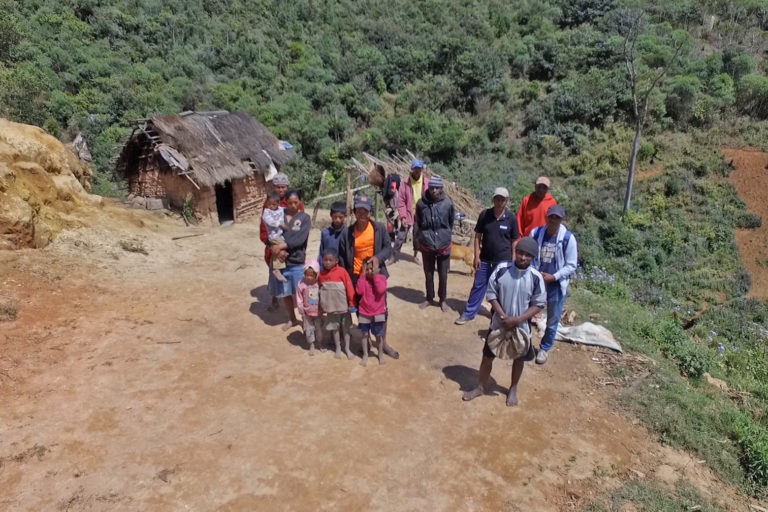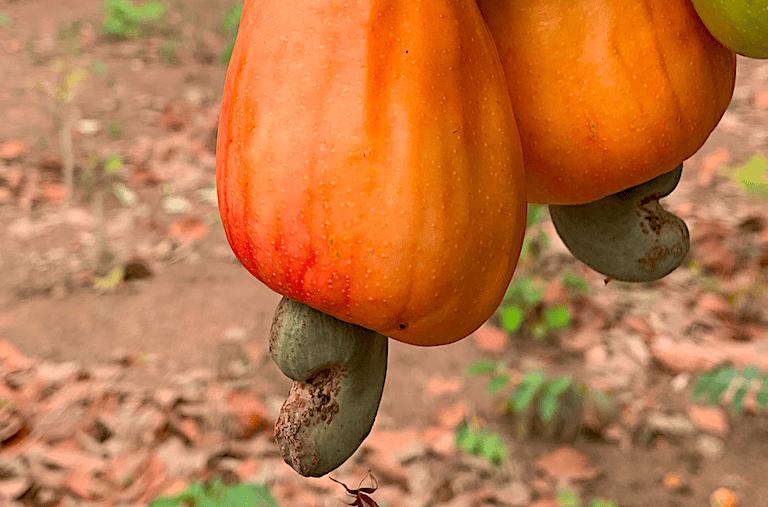The yellow-legged hornet is a predator: after it sets up a nest in a new neighborhood, its workers head out in search of smaller wasps, flies and bees to feed…
YELWA, Nigeria — Nightfall at the Ngel Nyaki Forest Reserve field station is clad in the whispers, chirps and trills of insect song. Flames from the burning wood in the…
LA CEIBA, Colombia — Nine years ago, Delio de Jesús Suárez Gómez made a pact with wild bees. The arrangement didn’t come easy, given that neither party knew each other…
Ana Rosa de Lima is a Brazilian materials engineer living in Germany. She had no idea that a 2019 crowdfunding campaign for a beekeeping project in the Indigenous Kayapó village…
SILINGE, Nepal — On a sunny afternoon, 70-year-old Dhanikram Praja squats on top of a hillock overlooking the lush green rows of trees dotting his farm, distinct from his other…
Márcio Werá Mirim, chief of the village of Tekoá Yvy Porã, shares his people’s sacred story in a mix of Portuguese and Guarani as he walks along a path in…
SHAMSHY, Kyrgyzstan — “I was only 9 when I first saw a snow leopard with my father. He was a ranger bringing injured animals found in the mountains to the…
Between 2019 and 2021, swarms of desert locusts̨ swept across the Horn of Africa and East Africa. In response, the worst-affected countries, Kenya and Ethiopia, sprayed millions of hectares of…
Je’chu, a god, first created bees so that their wax would cure the world. So goes the spiritual testament of the Yucuna Indigenous peoples of Colombia. “He is our god…
Insect pollinator loss is already resulting in an estimated half million early deaths yearly due to reduced healthy food availability and higher prices. Researchers say action to overhaul global agriculture is urgently needed.
Tanzania is Africa's second-biggest producer of honey, and to get it to the next level, the country’s government and aid agencies want beekeepers to adopt hanging-frame beehive designs to increase…
Brazil’s use of pesticides has spiked in recent years, growing by over 300,000 tonnes since 2010, according to experts. A recent report, published by the NGO Operação Amazônia Nativa (OPAN)…
PARAÍBA VALLEY, Brazil — Under the frigid morning air of the Mantiqueira Mountains in southeastern Brazil, honeybees begin leaving the hive. “When day breaks they are calmer,” says Mara Galvão,…
From tiny, jewel-toned metallic bees to cartoonish and lumbering bumblebees, the United States is home to more than 4,000 native and 55 non-native bee species. Now, scientists have announced a…
Eliupendo Laltaika spent much of his childhood in the village of Nainokanoka, in the northern part of Tanzania's Ngorongoro Conservation Area, herding cattle with his older brother. Sometimes they would…
A California court has ruled that state legislation on endangered species can apply to invertebrates. The decision this week by the Third District Court of Appeal means insects, including four endangered native…
COLOMBO — They’ve been called, erroneously, wasps and hornets, but the aggression is undeniable. The giant honeybees (Apis dorsata) of Sigiriya, an ancient rock fortress in central Sri Lanka that’s…
IZTARU, Costa Rica — “This simple wooden beehive is 20 years old. It was the first little bee house I ever made. I call it a relic; it’s sacred to…
Amid the smog, butterflies, bees and other insects are having a hard time smelling the flowers they so dutifully pollinate. Researchers found that common, ground-level air pollutants such as nitrogen…
ANJOZOROBE ANGAVO, Madagascar — Requiring a turbulent two-hour car ride followed by a two-hour walk across paddy fields and mountains, access to the small group of beekeepers in the village…
Scientists analyzed levels of chemical pollutants in native jataí bees across eight landscapes in Brazil’s São Paulo state. They found that in landscapes with more vegetation, the bees had fewer pollutants, at lower levels, indicating that the plants act as a filter and protective barrier
Farmers in northern Côte d’Ivoire are full of praise for cashew, the Brazilian nut tree introduced in the 1960s – ironically, it turns out – to combat deforestation. They rhapsodize…
My name is Krystle Hickman. I’m a photographer, community scientist and public speaker based in Los Angeles, California. My photography revolves around three things: bees, the plants they visit and…
Consider the bee. It’s small, and while over a lifetime it can pollinate up to 5,000 flowers, that’s only enough to produce a single teaspoon of honey. But bees don’t…
Luísa Carvalheiro says she remembers a time when açaí was just a humble berry, a staple for the Amazon's Indigenous communities. That was before the inky purple berries became all…
Chances are, the works of the world’s insects touch your lips every day. The coffee or tea you savor, both are insect pollinated. Apples, oranges, cabbages, cashews, cherries, carrots, broccoli,…
This article is a one year follow up to the award-winning series, The Great Insect Dying published in June, 2019 on Mongabay. The original series documents insect losses in Europe, the U.S. and the tropics — here’s what we know today.
ALBAY, Philippines — Josefina Dayta is among the fortunate Filipinos who haven’t had to experience job insecurity amid one of the harshest lockdowns imposed by any government during the COVID-19…
Carolina Cendra owns a small field about 20 kilometers, or 12 miles, from the town of Napenay, in Argentina’s Chaco province. On her 10 hectares (25 acres), she grows squash,…
In an episode of the Netflix dystopian sci-fi show “Black Mirror,” artificial bees have been deployed to pollinate the world’s plants after a massive pollinator extinction. A great idea, until…





































